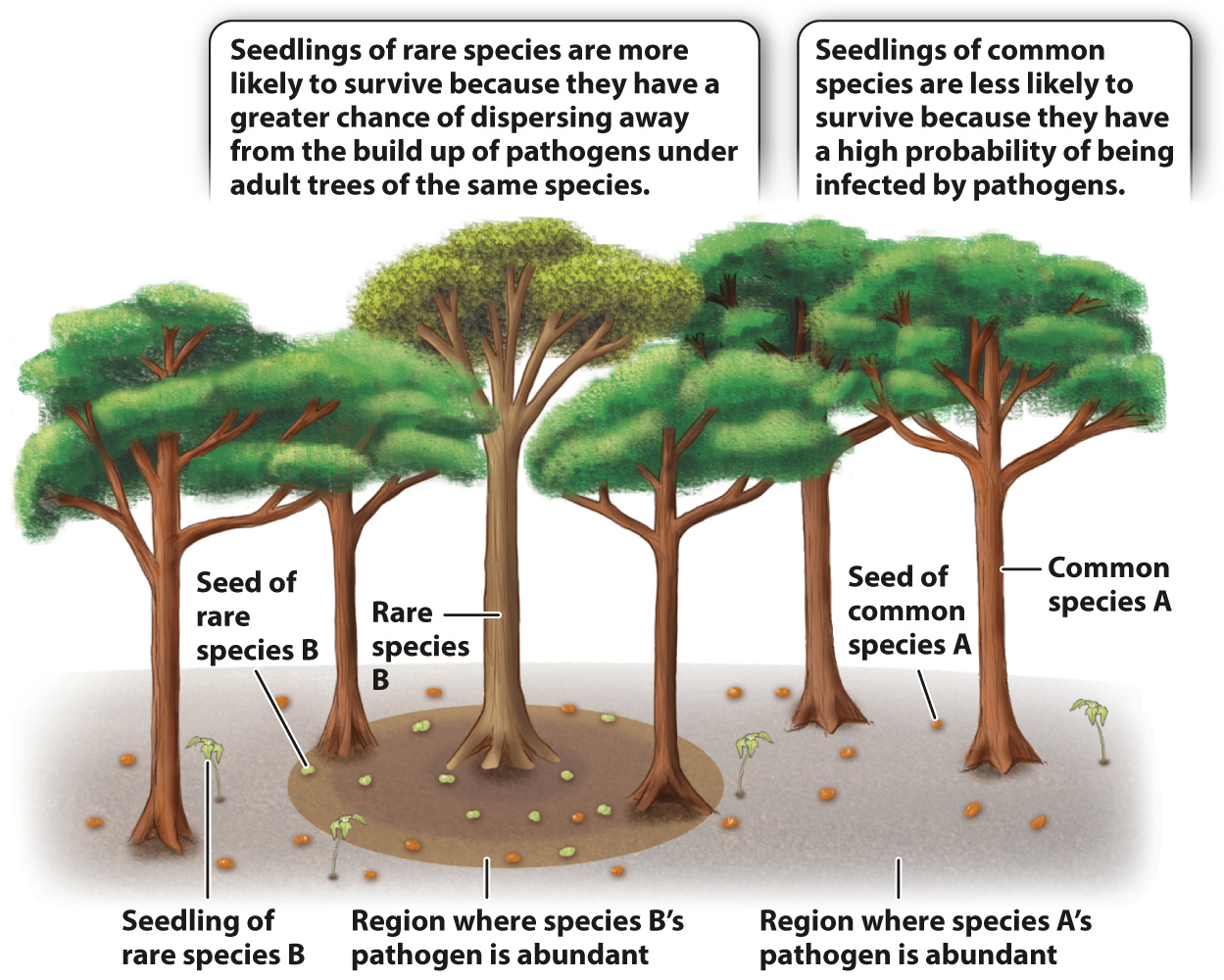Pathogens, herbivores, and seed predators can increase plant diversity.
The lowland rain forests of eastern Ecuador have the highest diversity of tree species recorded anywhere: More than 1000 species of trees were identified in a 500 m × 500 m plot. Because trees compete for sunlight, water, and nutrients, the species best able to acquire resources would be expected, over time, to outcompete all others. What allows so many tree species to coexist is one of the great questions of modern biology. In the 1970s, two ecologists, Daniel Janzen and Joseph Connell, independently proposed that interactions with host-specific pathogens, herbivores, or seed predators play an important role.
The Janzen–Connell hypothesis, as it is now known, is based on the observation that seeds or seedlings often suffer high rates of mortality when growing directly beneath an adult tree of the same species (Fig. 32.18). Seed predators often gather in higher densities near trees with mature fruit, so seeds that disperse far from their maternal plant may escape notice by seed predators. By a similar argument, pathogens are common in the soil underneath an adult tree, so seedlings that grow farther away have a better chance of escaping these pathogens. In both cases, high-density populations of seeds and seedlings are more at risk.

FIG. 32.18 Density-dependent mortality promotes tree diversity. Seedlings of rare species have a greater probability of surviving because they are more likely to escape infection by species-specific pathogens.
Such density-dependent mortality provides rare species with an advantage over more common species. In other words, the offspring of a rare species is more likely to survive because its seeds are more likely to be dispersed into a location where there are no neighboring adult plants of the same species. By favoring the survival of less common species, density-dependent mortality prevents one species from outcompeting all others.
In the tropical rain forests of Ecuador and elsewhere, only a small number of tree species are common; the majority of tree species are rare. These rare species are able to escape herbivore and pathogen damage, but they need reliable ways of getting pollen from one plant to another. Thus, animal pollination, herbivory, and infection by pathogens are thought to play complementary roles in promoting angiosperm diversity.
